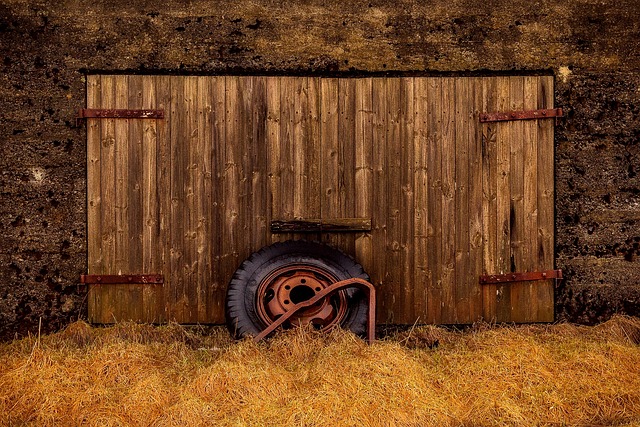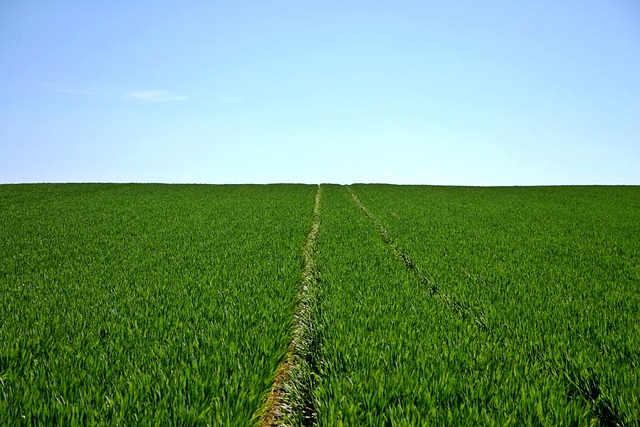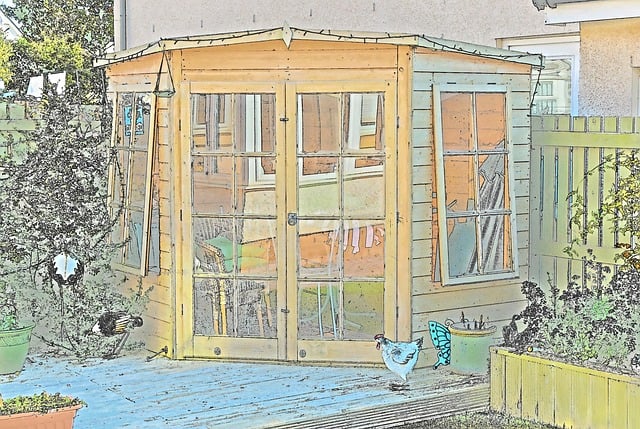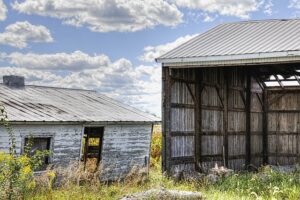In Wagga, optimizing farm sheds involves selecting robust materials like galvanized steel or treated timber to withstand harsh climatic conditions. These sheds can serve diverse functions, from storing equipment and housing animals to providing workspaces that benefit from features like insulation, skylights, and ventilation for enhanced productivity and comfort. Strategic placement and customization options, including door sizes and roofing materials, ensure they align with specific agricultural needs. Investing in high-quality farm sheds not only improves property functionality but also supports the efficiency and sustainability of farming operations by reducing movement times and offering spaces that can accommodate modern farming practices, such as integrating solar panels or rainwater harvesting systems. When choosing between steel or timber for these structures, it's important to consider factors like longevity, budget, intended use, and environmental impact, as both materials offer distinct advantages tailored to Wagga's agricultural environment.
Exploring the versatility and necessity of farm sheds on Wagga properties, this article delves into transforming open land into productive spaces. From optimizing functionality and durability to enhancing agricultural efficiency through innovative features, and considering their role in diversifying local enterprises, we’ll guide you through key decisions for constructing a farm shed that meets your specific needs. We’ll also examine the environmental footprint of these structures and offer best practices for sustainability, ensuring your investment not only benefits your operations but also aligns with eco-conscious principles. Discover how farm sheds can elevate your Wagga property to new heights of efficiency and versatility.
- Optimizing Your Wagga Property with Functional and Durable Farm Sheds
- – Design Considerations for Farm Sheds on Wagga Properties
- – Material Choices: Steel vs. Timber for Farm Shed Construction
Optimizing Your Wagga Property with Functional and Durable Farm Sheds

When considering the enhancement of your Wagga property, farm sheds emerge as a pivotal element in maximizing land use and storage capacity. These structures are not just repositories for equipment and machinery; they serve as multifunctional spaces that can be tailored to diverse needs, from animal housing to secure storage solutions. Selecting the right farm shed involves assessing factors such as material durability, design versatility, and spatial efficiency to align with your specific agricultural operations. Opting for high-grade materials like galvanized steel or treated timber ensures longevity, withstanding the harsh elements that characterize the Wagga region. Additionally, incorporating features such as insulation, skylights, and ventilation can enhance productivity and comfort, particularly if the shed is used as a workspace or for sensitive equipment storage.
Furthermore, the configuration of your farm sheds can greatly influence the workflow on your property. A well-planned layout with strategically placed sheds can optimize the movement of both people and vehicles around your land, minimizing transit times and improving operational efficiency. Customization options abound, from the size and number of doors to the type of roofing material, allowing for a shed that not only meets your current needs but also adapts as your agricultural endeavors evolve. In Wagga, where farming is deeply ingrained in the community, the right farm shed is an investment in the property’s functionality and longevity, contributing to the sustainability and success of your farming activities.
– Design Considerations for Farm Sheds on Wagga Properties

When considering the design of farm sheds for Wagga properties, it’s crucial to take into account the specific agricultural activities and the local climate. The region’s exposure to harsh weather conditions necessitates robust construction materials such as steel or durable timber that can withstand strong winds and heavy rainfall. Additionally, the interior layout should be planned to accommodate the equipment and tools required for efficient farm operations, ensuring there is ample space for machinery like tractors and harvesters. Natural light plays a significant role in optimizing work conditions; strategic placement of windows and skylights can greatly enhance visibility and reduce dependency on artificial lighting during daylight hours.
Furthermore, the design should incorporate features that facilitate maintenance and repairs, such as easy-to-clean surfaces and accessible roof trusses. Ventilation is another key aspect, as proper airflow helps to regulate temperature and humidity, thereby protecting stored goods from spoilage or damage. The design should also consider the flow of activities within the shed, allowing for smooth transitions between storage, processing, and workspace areas. Lastly, integrating sustainable practices into the design, such as solar panels or rainwater harvesting systems, can add value to the property and align with modern agricultural practices that prioritize environmental stewardship.
– Material Choices: Steel vs. Timber for Farm Shed Construction

When considering the construction of farm sheds for Wagga properties, material choice is a pivotal decision that influences durability, cost, and functionality. Steel farm sheds have garnered significant attention due to their robustness and low maintenance requirements. Steel’s resilience against harsh environmental conditions such as those prevalent in Wagga, including extreme temperatures and potential hail damage, makes it a favored choice for protecting agricultural machinery and livestock. Additionally, steel sheds can be designed with long spans, allowing for clear internal space and versatile usage. On the other hand, timber farm sheds offer a traditional aesthetic that complements the rural landscape. Timber’s natural insulation properties make it suitable for environments where temperature extremes are common, providing a comfortable environment for storing sensitive equipment or serving as an ancillary structure for living quarters. The choice between steel and timber for farm sheds in Wagga properties depends on various factors including budget, design preferences, intended use, and environmental impact considerations. Both materials have their advantages; steel for its durability and longevity, and timber for its sustainability and adaptability to different styles. It’s crucial to evaluate these aspects when deciding which material best suits the specific needs of your Wagga property.
In conclusion, incorporating a robust farm shed into your Wagga property can significantly enhance its functionality and value. When considering design elements and material selection for your farm shed, it’s clear that both steel and timber offer unique advantages. Ultimately, the choice hinges on factors such as durability, maintenance requirements, and budget. By carefully evaluating these aspects and aligning them with your specific needs, you can ensure that your investment in a farm shed yields long-term benefits. Whether opting for the strength and versatility of steel or the natural appeal of timber, these structures are an integral addition to any Wagga property, serving as a testament to the enduring relationship between agriculture and innovation.
